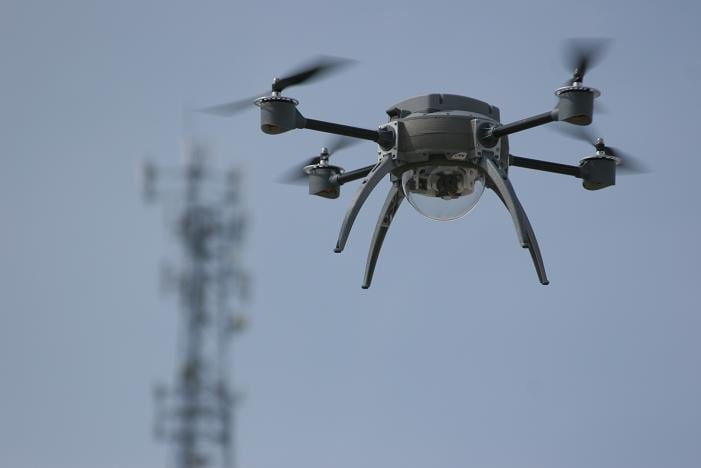
The Federal Aviation Administration (FAA) created a new aviation rulemaking committee to develop a regulatory path for beyond visual line of sight (BVLOS) drone flights.
The Federal Aviation Administration (FAA) created a new aviation rulemaking committee to develop a regulatory path for beyond visual line of sight (BVLOS) drone flights, FAA Administrator Steve Dickson announced at the FAA Unmanned Aircraft System (UAS) Symposium on June 9.
“I’m very pleased to announce that the FAA is forming a new aviation rulemaking committee for ARC [Aviation Rulemaking Committee], to help us develop a regulatory path for routine beyond visual line of sight operations,” Dickson said. “This committee will consider the safety, security and environmental needs as well as societal benefits of these operations.”
BVLOS drone operations will be key to enabling routine package delivery and infrastructure inspections, Dickson said.
Dickson said the committee would be submitting its recommendations to the FAA within six months.
“Right now, there are several companies using limited beyond visual line of sight, under existing regulations with waivers to conduct routine surveillance inspection and maintenance tasks for the railroad, electric, oil and gas and communications industries, and we’re learning a lot from this work but the operations…are not truly scalable or economically viable in the mid to long term under today’s rules so we need to change that,” Dickson said.
The new BVLOS recommendations that come out of the committee will work in conjunction with remote ID and operations over people and at night rules which were released in December of 2020 and implemented earlier this year.
“The bigger picture, really, is that remote ID is a necessary ingredient for truly scalable routine beyond visual line of sight operations,” Dickson said. “And of course, as we all know those are key to unleashing the true potential of drones and other highly autonomous vehicles.”
Dickson said the FAA is also continuing to invest in research and programs like BEYOND to create these rules. This research will also include things like unmanned traffic management (UTM) and urban air mobility (UAM) for passenger transport.
“So, of course, we’re heavily invested in making sure that the drone ecosystem will fit hand in glove with our air traffic control system,” Dickson said. “Our answer is UTM, which as you know is a foundational capability needed to unlock the full potential of this important aviation sector. Now based on the work that we’ve done with NASA, we’re planning a regulatory framework based on a federated approach that will allow airspace users to cooperatively manage their operations where the FAA does not actively provide separation services.”
The UTM system will include drones and air taxis or electric vertical take-off and lift (eVTOL) aircraft, Dickson said.